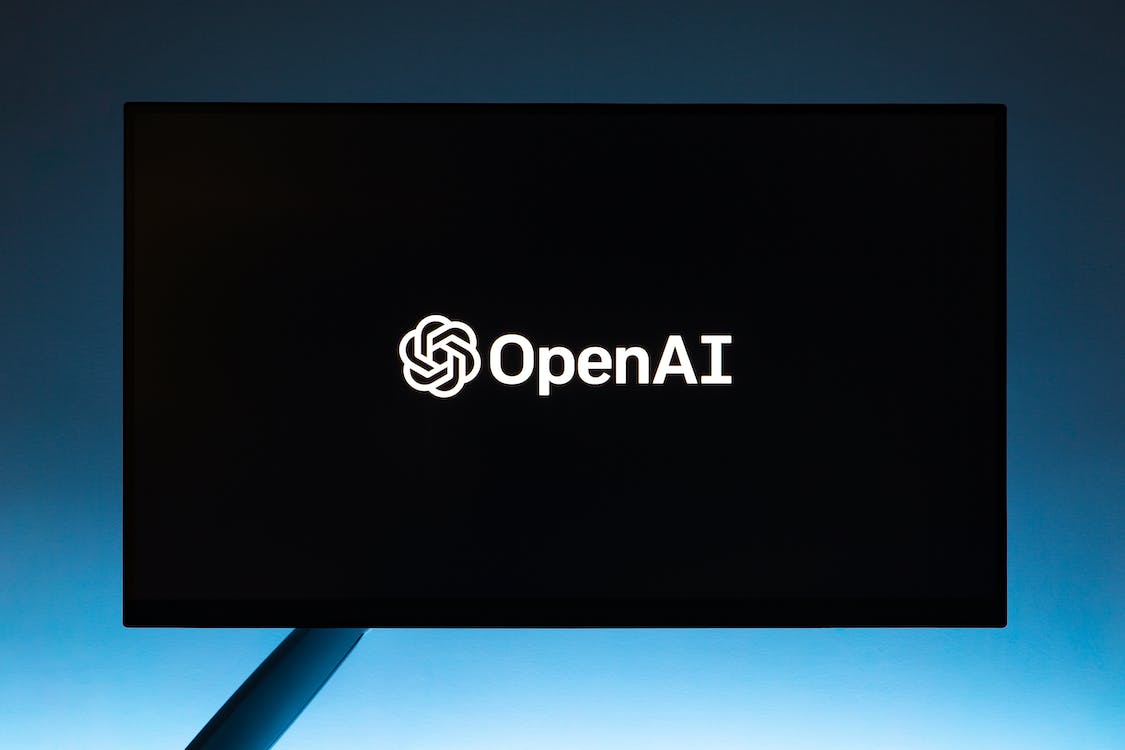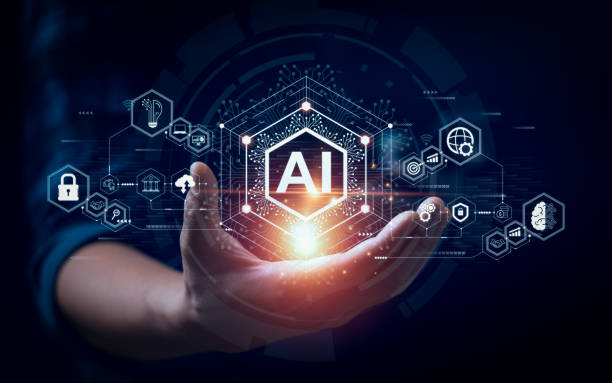WHAT IS ARTIFICIAL INTELLIGENCE?
Artificial intelligence (AI) is the simulation of human intellect in computer programs that are designed to carry out tasks that traditionally require human intelligence. In essence, AI enables robots to mimic cognitive processes like language comprehension, learning, and problem-solving.

Artificial Intelligence
Without explicit human programming for each distinct task, AI systems process vast amounts of data, spot patterns, and utilize that knowledge to decide or act. As they come across fresh information and experiences, these systems are able to adjust and perform better over time.
Two Main Types of AI:
Table of Contents
Narrow or Weak AI: This kind of AI is limited to the domain it is created for and is made to carry out certain tasks. Examples include recommendation engines, image recognition software, and voice assistants like Siri or Alexa. Our daily lives are filled with narrow AI, which is created to excel in particular applications.
General or Strong AI: The term “general” or “strong” AI refers to the idea of AI that has human-level intelligence and is capable of understanding, learning, and carrying out any intellectual work that a human is capable of. Strong artificial intelligence is still only a theoretical idea. Due to its potential impact on society, it is a subject of debate and ethical questions.
AI Subfields
AI can be categorized into different subfields, each with its unique focus and techniques, including:
Machine Learning (ML): ML is a branch of AI that focuses on creating algorithms that let computers learn from data and form hypotheses or judgements based on that learning. Common methodologies in ML include supervised learning, unsupervised learning, and reinforcement learning.
Natural Language Processing (NLP): The area of artificial intelligence known as “natural language processing” focuses on teaching computers how to comprehend, analyze, and produce human language. Chatbots, language translation, sentiment analysis, and other language-related tasks all rely heavily on NLP.
Computer Vision: This is the area of artificial intelligence that focuses on giving computers the ability to decipher and comprehend visual data from pictures or movies. Applications include facial recognition, object detection, and self-driving cars.
Robotics: AI is also utilized in robotics to create intelligent control systems that provide robots the ability to work alone or with humans to complete tasks.
EIGHT AI PLATFORMS TO LEVERAGE IN 2023
The availability of enormous datasets, powerful computers, and improved algorithms have all contributed to the significant improvements in AI that have occurred in recent years. Many other businesses, including healthcare, finance, transportation, entertainment, and more, can use it. The possible effects of AI on society, ethics, and legislation are still being discussed and debated as the technology develops.
TensorFlow:
TensorFlow is an open-source machine learning framework created by Google’s Brain Team. Deep learning models, such as neural networks for image identification, natural language processing, and other applications, are frequently built and trained using it.
Use cases include sentiment analysis, natural language comprehension, speech recognition, computer vision, and other AI-related tasks.
PyTorch:
An open-source deep learning framework called PyTorch was developed by Facebook’s AI Research team. It has grown in popularity because to its simplicity of use, dynamic computation graph, and robust support for projects that are research-focused.
Similar to TensorFlow, PyTorch is employed for deep learning applications like as audio and image recognition, natural language processing, and others.
Open AI
Modern artificial intelligence research company OpenAI was established in December 2015. Its main goal is to make sure that global artificial intelligence (AGI) is beneficial to all of humanity. The business has led the way in AI development by developing ground-breaking models and technology.

Artificial Intelligence: Open AI
The creation of GPT-3 (Generative Pre-trained Transformer 3), a cutting-edge language model that excels in natural language processing tasks, is one of OpenAI’s most illustrious accomplishments. With 175 billion parameters, GPT-3 has an extraordinary scale that enables it to create text that resembles human speech and carry out a variety of tasks, including language translation and content production.
The goal of OpenAI is to advance moral AI and guarantee that its technologies are applied responsibly. It has promoted openness and transparency by disseminating academic papers and making some AI models and tools accessible. However, it also recognizes the possible dangers of AGI and works to make sure that its use is safe and advantageous to humanity.
In order to advance AI capabilities and promote innovation in a variety of industries, OpenAI has worked with numerous organizations, academics, and developers throughout the years. OpenAI has developed into a significant player in the international AI community by encouraging a collaborative and inclusive approach to AI research. OpenAI works to create a better future through the responsible development and application of cutting-edge AI technology.
H20.ai
H2O.ai is a leading artificial intelligence and machine learning platform founded in 2012. It offers a full range of tools and technology to help companies and data scientists harness the power of AI and efficiently analyze and model data.
The foundation of H2O.ai is its open-source machine learning platform, H2O, which enables users to create and implement machine learning models at scale. Since H2O is easy to use and understand, data professionals may benefit from cutting-edge AI capabilities without having to learn complex coding or possess a high level of technical knowledge.
A variety of solutions are available on the H2O.ai platform, including H2O Driverless AI, which automates and accelerates the machine learning process to make it simpler to create highly accurate models. To expedite the entire data science workflow, the platform makes use of automated feature engineering, model selection, and hyperparameter tuning.
The company provides services to a broad range of clients in a variety of sectors, including retail, healthcare, insurance, and finance. H2O.ai gives businesses the ability to make data-driven decisions, obtain useful insights from their data, and improve business processes by leveraging the power of AI.
H2O.ai keeps pushing the boundaries of AI and machine learning with a strong emphasis on open-source collaboration and community-driven innovation. It actively participates in the open-source community and aids developers and researchers in their efforts to advance AI. H2O.ai is a key player in promoting AI adoption and innovation across numerous industries by democratizing AI and opening it up to a larger audience.
IBM Watson:
The AI platform IBM Watson was created by IBM. It uses machine learning and natural language processing to analyse enormous volumes of data and assist businesses and researchers in making wise decisions. Language translation, sentiment analysis, image recognition, and other functions are among Watson’s skills. It received great media attention by defeating human champions in 2011’s Jeopardy! competition. Since then, IBM Watson has developed into a potent tool for a variety of industries, from healthcare and finance to customer service and research, enabling users to uncover insightful patterns and find effective solutions in large data sets.
Use examples include language translation, image recognition, virtual assistants, and predictive analytics, all of which are powered by AI.
Microsoft Azure AI:
Microsoft Azure AI provides a suite of artificial intelligence services on the cloud. A variety of AI tools and services are available from Microsoft Azure that can be incorporated into different applications. It offers pre-built AI models and APIs so that programmers can construct clever solutions. Specifically, it helps programmers to include cutting-edge AI features like machine learning, computer vision, and natural language processing into their applications.

Artificial Intelligence: Microsoft Azure
Azure AI also gives organizations the tools they need to create intelligent applications that streamline operations, gather data, and improve user experiences.
Use cases include language comprehension, speech and voice recognition, computer vision, anomaly detection, and recommendation systems.
Google Cloud AI Platform:

Google Cloud AI Platform offers a range of AI and machine learning services to help businesses build, deploy, and scale intelligent applications. Along with AutoML for automated machine learning, it offers tools for data preparation, model training, and forecasting. The platform quickens the development of AI, enabling businesses to gain useful insights and improve operations.
Artificial Intelligence: Google Cloud AI Platform
The platform accelerates AI development, empowering organizations to extract valuable insights and enhance operations. Machine learning models can be built and deployed at scale using the Google Cloud AI Platform. It provides services including custom model training and serving, AutoML, and AI building blocks.
Use cases include speech-to-text, sentiment analysis, natural language processing, and predictive modelling. Image and video analysis are another example.
Dialogflow
Dialogflow is a natural language understanding (NLU) platform developed by Google. It allows developers to create conversational interfaces, such as chatbots and virtual assistants that can understand and process human language inputs. Dialogflow uses machine learning algorithms to extract meaning from user inputs and provides relevant responses or actions based on the context of the conversation.
The platform offers a user-friendly interface for designing and building conversational agents, making it accessible to both developers and non-technical users. It supports various messaging platforms, voice assistants, and other applications, enabling seamless integration across multiple channels.
Dialogflow is capable of handling complex conversations, maintaining context, and managing intents (user intentions) and entities (specific data points). It also supports advanced features like context-specific responses, slot filling, and webhook integrations to connect with external services and databases.
In summary, Dialogflow empowers developers and businesses to create powerful and engaging conversational experiences, making it a popular choice for building AI-driven chatbots and virtual assistants.



